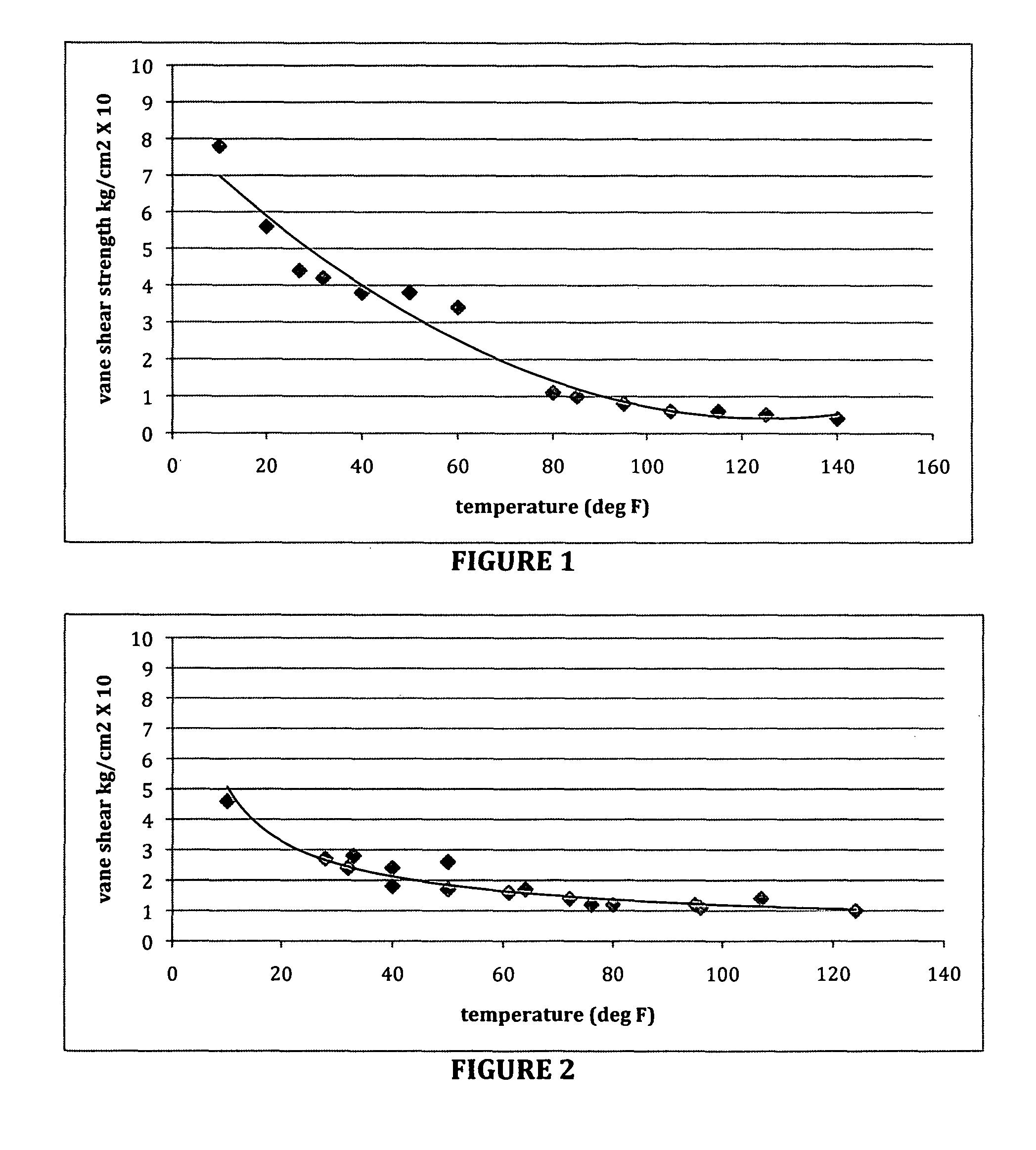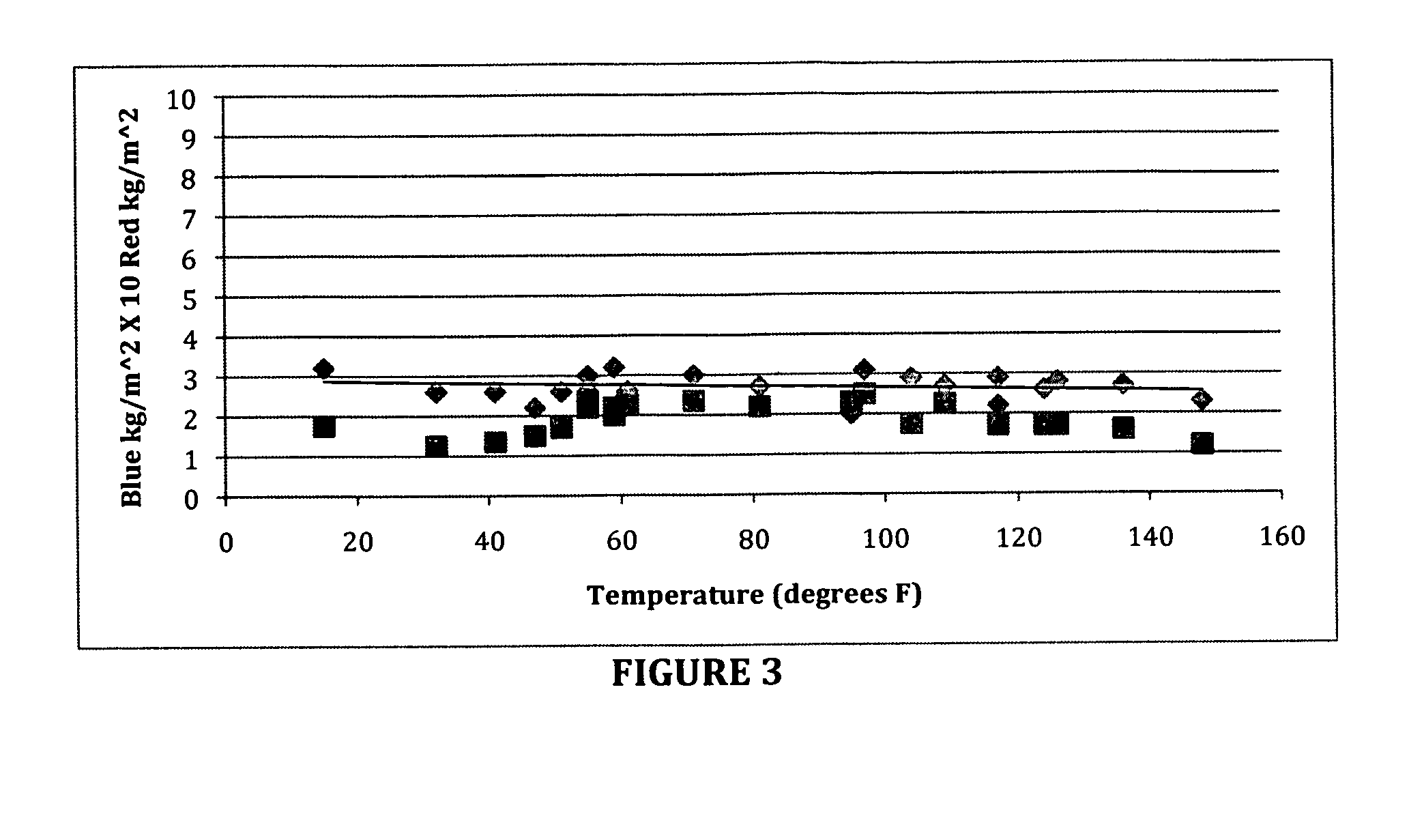Method of making and treating synthetic sporting surfaces
a synthetic and sporting surface technology, applied in the field of synthetic racing and sporting surface making, can solve the problems of low surface strength, low surface strength, and low bonding covalentity of polymer in oil systems, so as to improve the physical properties of the surface, improve the physical properties, and ensure the effect of high strength
- Summary
- Abstract
- Description
- Claims
- Application Information
AI Technical Summary
Benefits of technology
Problems solved by technology
Method used
Image
Examples
example 1
Treatment of an Existing Surface
[0050]An existing synthetic track in Fair Hill, Md., originally manufactured and installed by Tapeta Footings (as described in Dickinson, U.S. Pat. No. 5,961,389, 1999), and having been in place for about three years, was experiencing numerous problems due to both inclement weather in the winter months and because of breakdown of the rubber shavings used in the surface. During colder months the surface would freeze, and the fibers in the frozen surface separated from the sand and other components. This was due to the wax freezing, hardening, becoming brittle, and losing adhesion at freezing temperatures, ceasing to act as a binder. During the warmer months of the year, the surface became very warm from infrared absorption, which melted the wax, making the surface too soft and mushy. Furthermore, the warm, softened wax was found to have degraded the rubber shavings, which were softening and falling apart, making the surface very sticky, and releasing c...
example 2
Manufacture of a New Surface Using a Combination of Polysiloxane Polymer Binder with Prior Art Binders
[0051]A new, unused sample (1 kg) of a conventional prior art synthetic sporting surface manufactured by Tapeta Footings, Inc. according to Dickinson (Dickinson, U.S. Pat. No. 5,961,389, 1999) was treated with the present invention in essentially the same proportion as for example 1. After mixing well, the sample was tested for its ability to withstand freezing temperatures, and to maintain cushion and integrity throughout its working temperature range. The resulting surface by this invention was found to have dramatically improved properties over the untreated prior art surface. FIG. 2 shows a graph of vane shear strength vs. temperature for the treated sample. Compared to an untreated sample of the same material (FIG. 1), the shear strength of the treated material maintained optimum performance over a much wider range of temperatures, and did not fail at higher temperatures (at le...
example 3
Manufacture of a Wholly New Synthetic Sporting Surface Formula Comprising Various Solid Materials and a Mixture of Polysiloxane Polymer Binders and Crosslinkers
[0052]A 2.5 kg sample of a wholly new synthetic surface composition was prepared as follows. Two polysiloxane binders were used. The first polysiloxane binder (Binder 1) consisted of a polyalkylmethylsiloxane polymer having the general formula —(RR′SiO)n—, where R═CH3, and R′ is a mixture of monovalent hydrocarbon substituents having between 1-36 carbons. The second polysiloxane binder (Binder 2) was hydroxy-terminated polydimethylsiloxane having a viscosity of approximately 5,000 cSt. The third binder (Binder 3) was mineral oil having a viscosity of approximately 200 cSt. The crosslinker used was boric acid. According to this invention, the three binders were mixed with the dry, solid ingredients in the following proportions, first adding Binder 3, then Binder 1 and Binder 2 in that order, with mixing in-between binder addit...
PUM
| Property | Measurement | Unit |
|---|---|---|
| temperatures | aaaaa | aaaaa |
| elasticity | aaaaa | aaaaa |
| adhesion | aaaaa | aaaaa |
Abstract
Description
Claims
Application Information
 Login to View More
Login to View More - R&D
- Intellectual Property
- Life Sciences
- Materials
- Tech Scout
- Unparalleled Data Quality
- Higher Quality Content
- 60% Fewer Hallucinations
Browse by: Latest US Patents, China's latest patents, Technical Efficacy Thesaurus, Application Domain, Technology Topic, Popular Technical Reports.
© 2025 PatSnap. All rights reserved.Legal|Privacy policy|Modern Slavery Act Transparency Statement|Sitemap|About US| Contact US: help@patsnap.com


